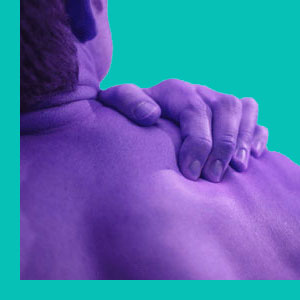
Herniated disc weakness is one of the possible neurological symptoms associated with many bulging disc conditions which may compress nerve tissue in the spine. While true anatomical weakness can occur due to advanced cases of spinal stenosis and can also occur from extreme foraminal stenosis, the symptom is often mistakenly linked to a structural cause, when all along the underlying process responsible is muscular or ischemic. This is one of the main reasons why back and neck pain is so often misdiagnosed and treated without any real enduring success.
This resource section provides information on the link between certain types of disc pathologies and the occurrence of muscular weakness in the body or limbs. We will examine how nerve compression can result in weakness and also investigate other potential sources of symptoms not related to a bulging intervertebral structure.
Weakness from a Bulging Disc
Weakness can be felt in the back, buttocks, legs, feet, neck, shoulder, arms, hands or fingers, depending on where the herniated disc exists. For patients diagnosed with foraminal stenosis enacting a pinched nerve, the herniation would affect a particular nerve root in order to source highly location-specific symptoms. Meanwhile, the patient often demonstrates symptoms which are far too wide ranging to be explained via a single herniated disc or symptoms which exist in areas not served by the affected nerve.
In spinal stenosis cases, the diagnosis can be even more difficult. This is because many herniated discs produce a mass effect on the thecal sac, which is usually completely asymptomatic, while others impinge on the actual spinal cord, producing a diversity of expressions. When symptoms do occur, they may exist anywhere below the level of stenosis, including leg weakness, tingling, numbness or pain, even when the stenosis is cervical.
Read about herniated disc weak hand expressions, as well as the possible causes of weak arms.
Learn why you might have a herniated disc weak leg condition.
Herniated Disc Weakness Diagnosis
Most patients report subjective weakness, which means that they feel as if their arms or legs do not have full strength. Upon diagnostic testing, the muscles are found to check out fine.
Objective weakness may exist in verified cases when the muscles are deficient in their functional abilities and can be confirmed via diagnostic testing.
Subjective weakness is almost never actually sourced by a pinched nerve, while objective weakness may be. There can still be many other explanations for objective weakness, including muscular issues and regional ischemia, but at least the disc may be the culprit. In these cases, it is crucial to really study the exact herniated disc symptoms and analyze them for discrepancies with the expected symptoms of the diagnosis.
In spinal stenosis diagnoses, the symptoms may vary greatly in location, expression and severity and may also be highly variable in the same patient. Since stenosis often exists in the low back and neck concurrently, the incidence of misdiagnosis is still high, especially when symptoms of weakness reside in the lower body. In most cases, these expressions are blamed on the lumbar stenosis, but statistics show they are often created from the cervical stenosis.
Herniated Disc Weakness Symptomology
Herniated disc weakness is usually the last neurological symptom to develop in cases of true nerve compression. Pain begins the symptom cycle, followed by tingling, numbness and then weakness. This is a good indicator of a true compressive neuropathy. Meanwhile, in spinal stenosis patients, weakness may fall into the progression at any point in the cycle or not at all.
Herniated discs are often asymptomatic and not of any concern. In some symptomatic complaints, herniated discs are coincidental to the pain or nerve expressions. This helps to explain the reason for the poor performance of most herniated disc treatments, when misdiagnosis implicates innocent intervertebral structures unfairly.
Do not let any care provider steer you in the wrong direction when it comes to your health. Learn the facts for yourself. If your pain has not resolved despite active treatment, consider the very real chance that the diagnostic conclusion may be completely incorrect. This occurrence is epidemic in the healthcare system and particularly prevalent in the back, neck and sciatica pain sectors.





